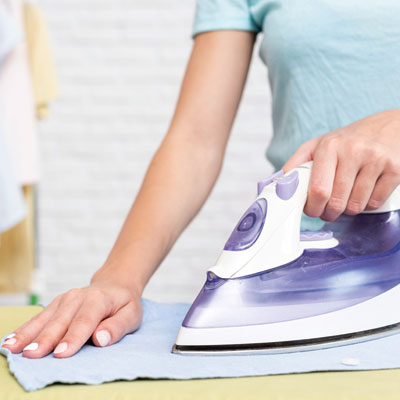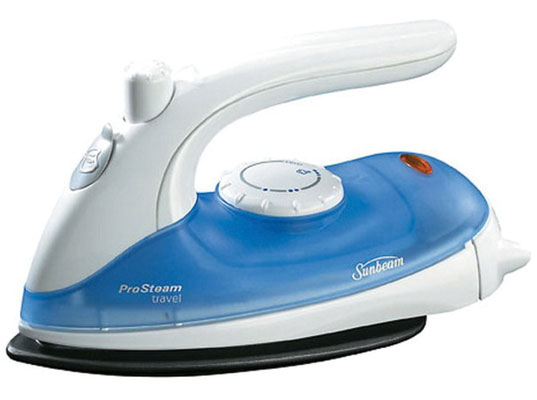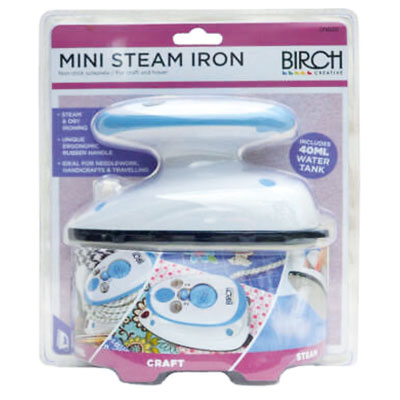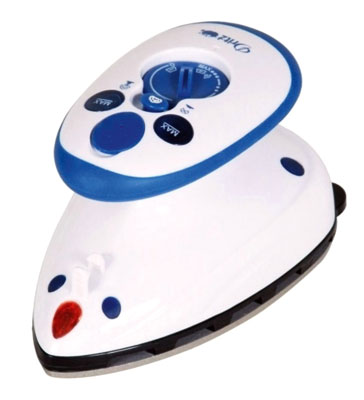
Know Your Product: Irons
They say that asking a quiltmaker to hem your pants is like asking Picasso to paint your bathroom. And there’s a similar concept when it comes to irons and ironing. How many of us know the joy of ironing newly purchased fabric or pressing just-finished patchwork blocks, but abhor tackling that mountain of shirts and trousers skulking in the corner of the laundry?
An effective iron is an essential tool for every quiltmaker, but with so many on the market, how do you choose the one that’s best for the job? As with most quiltmaking tools, the answer is that it all depends — on the style of quilts you make, how long you can typically spend when you have the opportunity to work on your projects, and, of course, on your budget. So let’s talk irons.
Budget
It’s possible to buy an iron in Australia for $7.50. Really. It will probably have been manufactured by a company that you’ve never heard of and have few heat controls or steam holes. But even so, cheap irons have their fans. At such low cost, it may be viable to buy one, use it and, when it fails — perhaps after only six or 12 months — throw it out and buy another one without thinking twice.
At the other end of the scale, there are irons on the market for $350+ — and these are ‘just’ irons, not fancy pressing stations or steamers. At this price, you might expect it to tackle that mountain of wrinkled clothes all by itself, but alas, it won’t. Still, you’ll probably find that it comes packed with every feature that you could possibly think of and some that you didn’t even know were available. Consider how much you can afford and how much you’re comfortable spending on an iron. Look for one that offers the best fit for your needs within your price range.
Weight
The advice for quiltmakers when assembling patchwork is to press rather than iron. Ironing is when you move the iron back and forth over fabric to eliminate wrinkles. Pressing is simply lifting and setting the iron down. You need to iron lengths of fabric before cutting them, but once you’re stitching small patches together, you’ll probably find yourself pressing so that you flatten the seams without distorting the fabric. So, consider the weight of your iron. A heavier iron will be more effective when pressing, but less comfortable when ironing. If you have any hand or wrist problems, such as arthritis, you may need to look at a lighter iron. The same is true if you’re accustomed to spending many hours at a time working on your quiltmaking.
Ergonomics
Is the iron comfortable to use? Some manufacturers claim to have designed handles that are a better fit for hands, but as each of us is slightly different, it’s probably best to actually hold and lift an iron before buying it. Another aspect of ergonomics to consider is whether you’d like an iron that ‘hovers’. The Oliso brand is best known for this: you only need a light touch to lower it onto the fabric, which reduces muscle fatigue in your hands and shoulders. Other aspects of comfort include the length of the power cord, whether the cord pivots as you turn the iron in different directions and the position of the dials/settings. Left-handers, in particular, should check that they’ll be able to read and set various functions on an iron before buying it.
Safety
Automatic shutoff is the key safety feature in an iron. It’s especially useful for those who are prone to interruptions while they work on their quilts. How easy is it to leave a hot iron unattended if you’re called away to the phone, to help a child or to let the pets in and out? Check to see how long the iron remains on before the automatic shutoff occurs and if this time varies depending on whether the iron is upright, horizontal or has tipped over.
Steam
Whether to use steam or not when pressing patchwork is something of a hot topic among quiltmakers (pardon the pun!). Even those who typically use a dry iron may find it useful to switch the steam function on when ironing long lengths of backing fabric or border strips. Steam can also help when blocking patchwork so that it lies flat and is the correct size. So, no matter whether you’re an habitual or occasional user of steam, it’s worth reviewing the steam function of a new iron. How many steam holes are there in the sole plate? (More is better.) Are you able to vary the amount of steam? How large is the water tank? (You don’t want to be stopping to fill it up too frequently.) And does the tank have a clear side so you can easily see how much water is in it? You’ll probably also be interested to know if the iron has a self-cleaning function or whether this is a task you’ll need to undertake yourself.
Power
Generally speaking, the more watts an iron has, the hotter it will get and the faster it will reach a maximum temperature. This can be important if, for example, you switch the iron off while chain piecing and then move to the ironing board to press a bunch of seams at once. If it takes two or three minutes to heat up each time you turn the iron back on, you may run out of patience.
Type of quilts you make and where you make them
Some quiltmakers will have other needs to be taken into account when buying an iron. Art quilters, for example, may want an iron that allows them to make precise changes to the temperature to handle a variety of non-cotton fabrics. Those who make miniature quilts will be concerned about the tip width of an iron — and indeed may find it necessary to purchase an iron with a small sole plate or even a mini model. If you regularly take your iron to quilt group meetings, workshops or retreats, look for an iron that is lightweight and comes with a travel case.
Clearly, no one iron will suit every quiltmaker. And you’re probably surprised by all the criteria you could use to make your selection. Bear in mind that your iron is likely to be a constant companion as you stitch, so take your time, do some research, see what’s available, then strike while the iron is hot!





